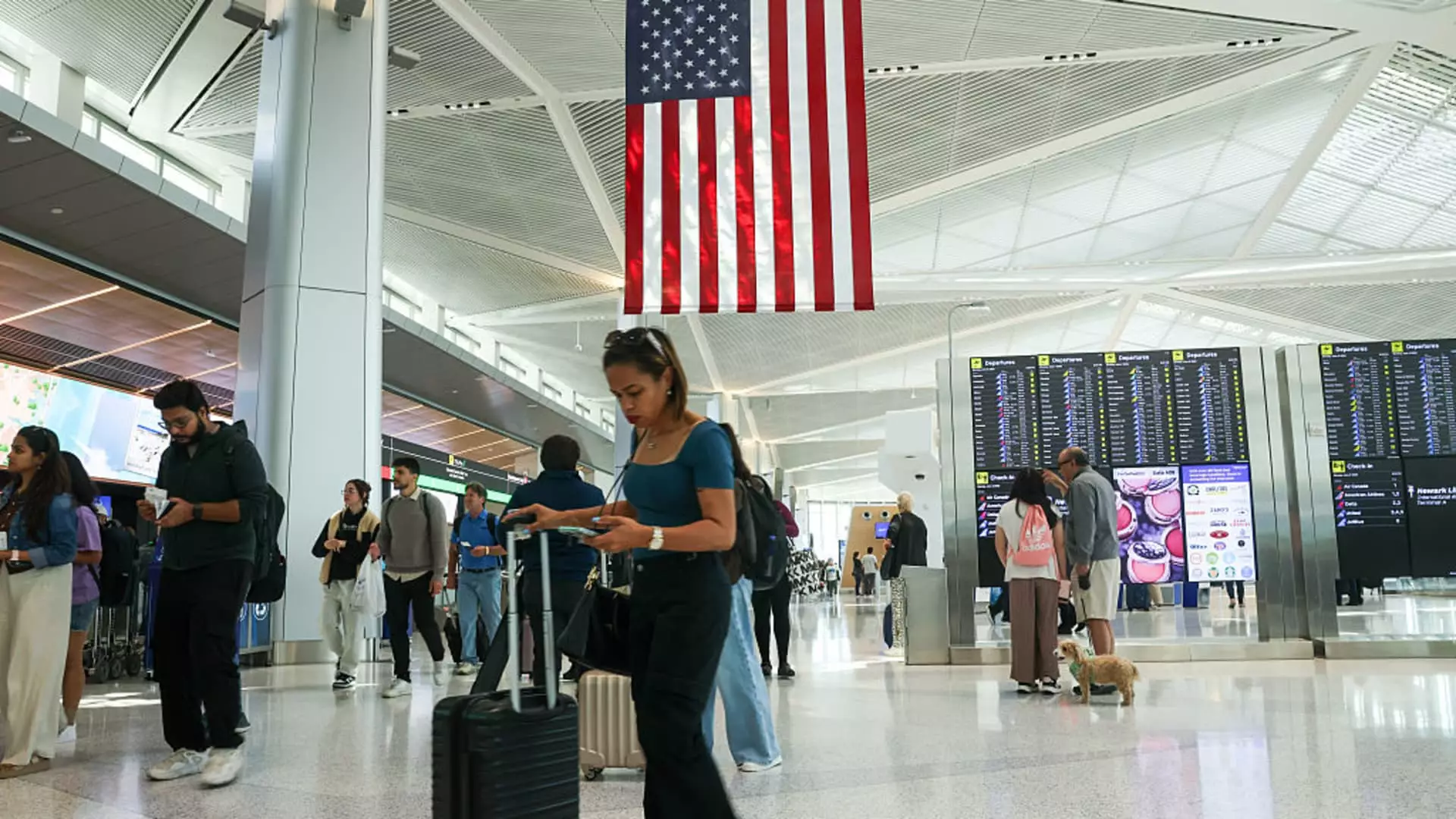The summer travel season often acts as a barometer for the health of the airline industry, but this year, it masks deeper systemic issues rather than illustrating genuine growth. While millions are expected to jet across the skies over the July 4 holiday, these numbers do little to disguise the underlying cracks within the industry. Airlines are blatantly slashing fares, signaling desperation rather than confidence, and the promise of a booming summer significantly overshadows a troubling warning sign for the months to come. The perception of a thriving travel sector is more an illusion than a certainty, as the industry grapples with a paradox of declining demand amidst excess capacity.
Price War or Economic Woes?
Airfare has entered a dangerously low territory, with domestic round-trip tickets averaging $265—its lowest since 2021—according to Hopper, essentially a price war emblematic of volatility rather than vitality. Lower fares, rather than being a testament to consumer confidence, are often a desperate attempt by airlines to fill planes with dwindling demand. The recent inflation data, showing airfare down over 7%, confirms that travelers are increasingly reluctant to spend, especially amid the broader economic uncertainty. These declining fares raise a critical question: are airlines genuinely struggling with growth, or are they trying to stave off the inevitable collapse of their profit margins?
Uncertain Future and Strategic Flight Cuts
Airlines have abruptly pulled their 2025 forecasts, citing the unpredictable political and economic climate. Fears surrounding tariffs, waning international tourism, and a fragile global economy have forced industry leaders to adopt a defensive stance. Delta’s upcoming earnings report is expected to reflect a cautious approach, with indications that airlines will trim unprofitable routes, particularly in the off-peak seasons. What this reveals is a sobering truth: the industry is not taking proactive steps towards sustainable growth but is instead planning to survive on a shrinking, increasingly uncertain base of demand. The notion of ‘stability’ appears fragile, with many industry insiders admitting that no decisive upward trend has materialized.
Demand Deteriorates, Profits at Risk
Despite record-high passenger throughput at TSA checkpoints, the optimism is misplaced. The numbers—over 18.5 million travelers expected at U.S. airports just last week—do not translate into profitability or long-term growth. Instead, they highlight the industry’s reliance on short-lived peaks that mask a stagnant demand environment. The reality is that real consumer spending on airfares continues to decline, with Bank of America data indicating an 11.8% drop in travel-related expenditures in June alone. This downward spiral in demand, coupled with flat or decreasing fares, signifies a fragile economic foundation. The airlines’ lockdown on capacity and potential future cuts underscore a grim forecast: their profits hinge on the fleeting hopes of a demand rebound that remains elusive.
International Travel: A Mixed Blessing
On the overseas front, the scenario is similarly cautious. International travel from the U.S. has shown room for optimism, with flights to Europe rebounding to 2019 levels—and fares dropping to match those pre-pandemic. While this might seem promising, it’s only a partial victory; fares to Asia have slid further, down 13%, reflecting waning interest and economic challenges abroad. These international trends indicate that even within the globalized travel ecosystem, demand is teetering, and airlines face the harsh reality that competitive fares are eroding margins. If the global economy weakens further, international travel could become another casualty, leaving large international carriers similarly exposed.
The Need for Honest Reflection
What’s painfully clear is that the airline industry remains in a state of limbo, neither fully recovering nor collapsing. The advantageous narrative of a “summer on sale” is, in reality, a symptom of desperation rather than resilience. Airlines have been forced into a reactive posture—cutting unprofitable routes, slashing fares, and cautiously awaiting the inevitable economic slowdown that might—or might not—materialize. There is an urgent need for a more honest assessment of the industry’s health, one rooted not in seasonal fare slumps but in core demand realities. Without genuine adaptation—not just short-term cost-cutting—the aviation sector risks further turbulence, with its long-term stability hanging in a fragile balance.

Leave a Reply